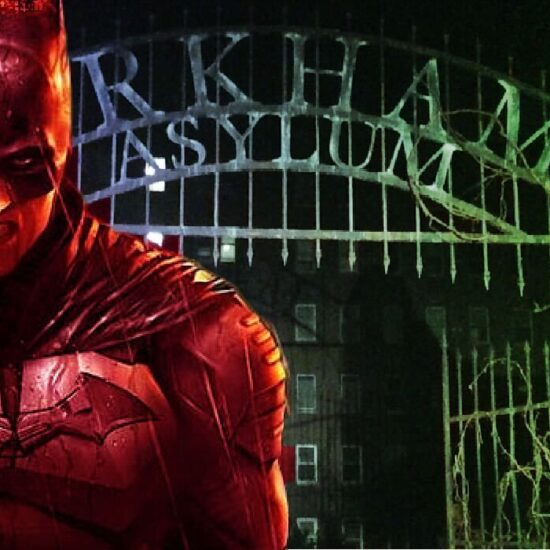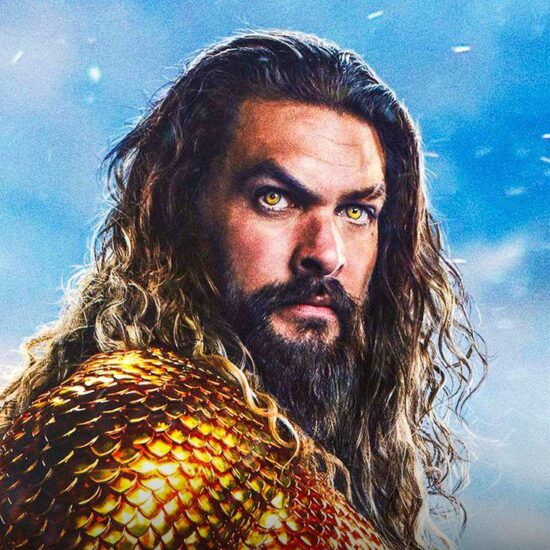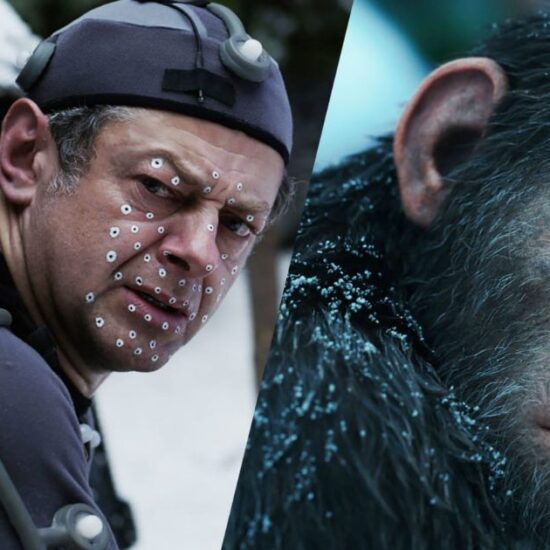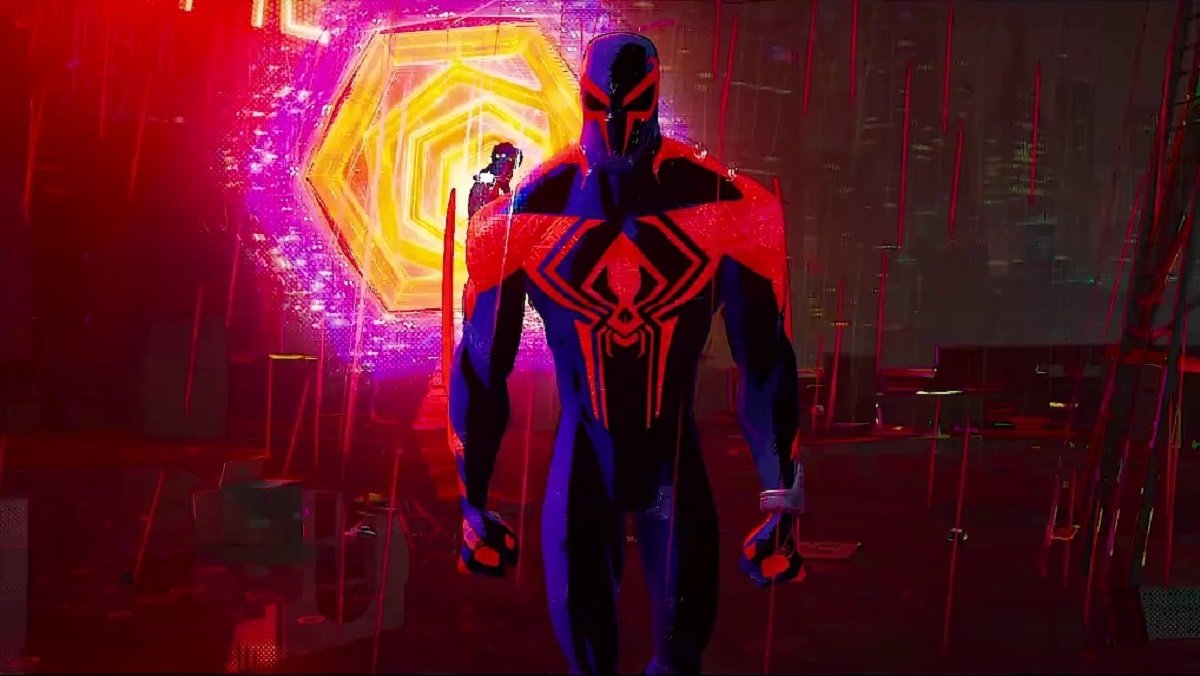
Despite what many believe, Miles Morales was not the first non-Peter Parker Spider-Man to star in his ongoing series. Nor was he the first non-white hero to use the name. The first was Miguel O’Hara, famously known as Spider-Man 2099. Created by writer Peter David and artist Rick Leonardi, this Spidey was part of a publishing initiative by Marvel known as the 2099 universe. In the early ’90s, Marvel Comics gave many of their most popular titles futuristic updates, often with new characters wearing the famous mantles of past heroes. There was X-Men 2099, Punisher 2099, and of course, Spider-Man 2099. And thanks to Spider-Man: Across the Spider-Verse film, Miguel O’Hara’s Spidey is a household name. Here’s the backstory of this once-forgotten ’90s hero.
Miguel O’Hara: The Most ’90s Spider-Man
In the early ’90s, the comics industry was booming. DC sold millions of comics with stunts like Superman’s death. And Marvel crushed it by selling 10 million copies collectively of Spider-Man #1 and X-Men #1. This resulted in a brief comic boom, which also coincided with the rise of Image Comics. Marvel launched a whole new line of books, conceived by Stan Lee and superstar creator John Byrne. This new line of comics would take place a century in the future from the regular Marvel series, “The Marvel World of Tomorrow.”
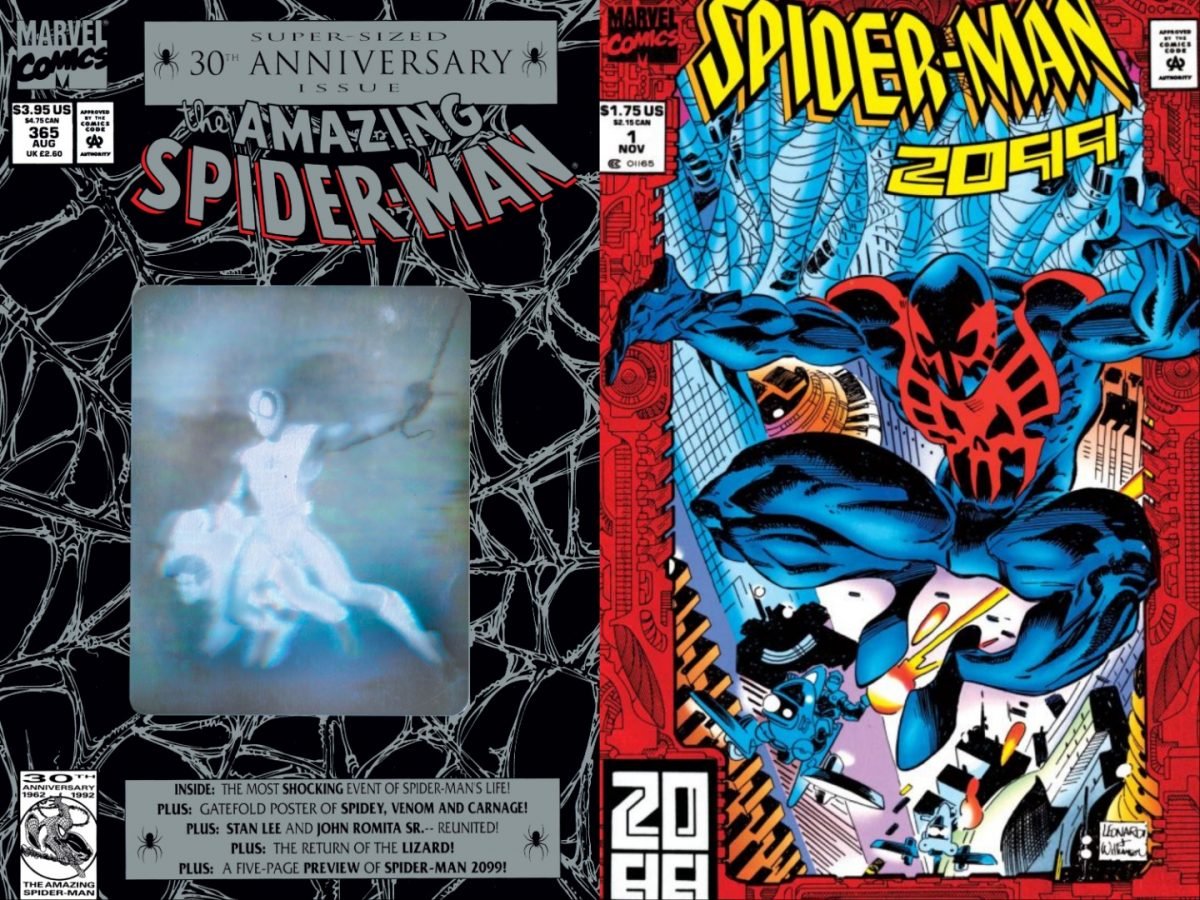
That title became a bit of a mouthful, so it became Marvel 2093, then finally, Marvel 2099. Spider-Man 2009 first appeared in a preview in 1992’s Amazing Spider-Man #365, before launching in his own ongoing title a few months later. Writer Peter David named him Miguel after his friend actor Miguel Ferrer, best known for his roles in Twin Peaks and Robocop. He was given mixed ethnicity, with an Irish father and a Mexican mother. This was something that was a pretty big deal at the time when most superheroes were of caucasian and North American descent only.
The Comics Origins of Spider-Man 2099

Miguel O’Hara/Spider-Man 2099 was from what appeared to be the future of the mainstream 616 Marvel Universe. However, it was later revealed as Earth-928. Miguel was the head of the genetics department at the mega-corporation called Alchemax. He spent much of his time trying to replicate the powers of the original Spider-Man, Peter Parker. Miguel’s manipulative boss Tyler Stone got him addicted to a drug called Rapture, an addiction that Miguel tried to purge from himself by making himself the guinea pig in his experiments to replicate spider powers. But a co-worker named Aaron Delgado, who was always jealous of his success at Alchemax, sabotaged the machine that would give Miguel spider abilities. He now had a staggering 50% arachnid DNA. The machine exploded, and Tyler Stone began the hunt for his former employee to unlock the secrets of his powers.

Using an old Dia de Los Muertos costume, which was made from unstable molecules (an invention of the Fantastic Four’s Reed Richards), Miguel donned the suit and became the year 2099’s new Spider-Man. Miguel embraced this new Spider-Man 2099 identity, and became an enemy to not only his former employer Alchemax, but also all the corrupt megacorporations which run the world in the future. He also fought many futuristic versions of classic Peter Parker foes, like the Vulture and the Green Goblin. Always with the help of his holographic assistant, Lyla. Eventually, thanks to some time travel shenanigans, Spider-Man 2099 even met his predecessor Peter Parker in the past. The solo Spider-Man 2099 Marvel Comics series ran for four years and had a respectable 46 issues. But in the late ‘90s, Marvel Comics hit serious financial troubles and shuttered the whole line. Miguel’s Spider-Man 2099 would be more or less absent from the Marvel Universe for a decade.
The Powers of Spider-Man 2099

Miguel O’Hara has powers similar to Peter Parker, but they are not exactly the same. Like Peter, Spide-Man 2099 has the proportionate strength, agility, and speed of a spider. But he can only climb on walls thanks to the talons he grew on his appendages. He also has a pair of fangs that deliver poisonous venom. Some have joked that, in some ways, Spider-Man 2099 is a “vampire Spider-Man.” Unlike Peter, Miguel O’Hara’s webbing comes out of his wrists naturally, a power Spider-Man 2099 had whole decade before Tobey Maguire had organic webs. He tends to prefer gliding to swinging on webs, though. Unlike Peter, Spider-Man 2099 has no traditional Spider-Man “Spidey Sense.” However, he makes up for this fact with telescopic vision, not to mention his super hearing.
Spider-Man 2099 in Modern Marvel Comics

In the 2000s, Miguel found himself stranded in the past. Spider-Man 2099 finally showed up again in mainstream monthly titles like Amazing Spider-Man. Miguel even worked for Peter in his Parker Industries empire before Peter lost it all and went back to being an ordinary middle-class guy. He appeared a few more times, particularly in the crossover comics events like Spider-Verse or Spider-Geddon. Spider-Man 2099 even got a new white costume while stuck almost a century in the past. But without a doubt, his upcoming appearance in Spider-Man: Across the Spider-Verse is his biggest mainstream appearance—at least outside of comics.
Who Is the Animated Miguel O’Hara/Spider-Man 2099 in Across the Spider-Verse?

We saw Spider-Man 2099 and his assistant Lyla in the post-credits scene for Into the Spider-Verse. Then Spider-Man 2099 played a key role in its sequel, with Oscar Isaac reprising his role. In Across the Spider-Verse, we learned that Miguel runs the Spider-Society of multiversal spider-heroes in Nueva York, on Earth-928B. Unlike his Marvel Comics counterpart, this Spider-Man 2099’s home city looks utopian—not like a dystopian hellscape.

Miguel built the device that allowed him to hop dimensions within the multiverse, something we saw at the end of Into the Spider-Verse. Eventually, he discovered a universe where he had a family and a daughter. When his alternate self there died, Miguel decided to replace him on that Earth and raise his daughter as his own. But that one anomaly seemingly caused that particular Earth to unmake itself, apparently killing everyone on it.
Now despondent over his unintended actions, Miguel created the Spider-Society, multi-dimensional Spider-People dedicated to returning any wayward Spider-People back to their proper dimension after the Super Collider event at the end of the previous film. Most importantly, his trauma caused him to enforce a strict mandate: every spider hero had to follow their intended destiny and “canon event,” usually a personal tragedy, otherwise it could lead to anomalies like the one that destroyed the alternate Miguel’s world.

Miguel sees Miles Morales as the “original anomaly.” He says Miles’ unintended existence as Spider-Man is the entire reason he had to create a Spider-Society in the first place. When Miles lets it be known that he won’t allow his personal “canon event” to take place—the death of his father—Miguel sends the entire Spider-Society out to stop him. Although he thinks he’s doing the right thing, Miguel O’Hara is the real antagonist of Across the Spider-Verse. Here’s hoping he sees the error of his ways by the third film. We’d hate to see Spider-Man 2099 only as a misguided villain; he deserves a heroic turn.
Originally published on May 31, 2023.











